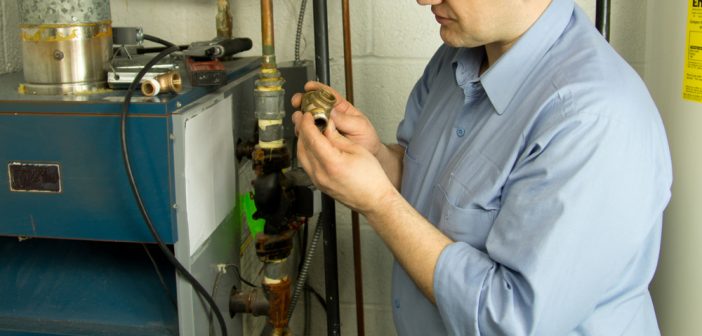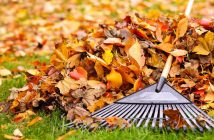Do you have an end-of-summer to-do list that includes back-to-school preparation and completing a few outdoor updates before the colder temperatures arrive? Another item that should be added to your agenda is checking to make sure that your heating system will be ready to efficiently and effectively keep you warm. This step can prevent some unexpected surprises when you need to turn on the heat. Here’s is your end-of-summer heating system checklist to help you get started.
Safety First
Before doing a maintenance check, turn off the electrical power and fuel supply (in most homes, this is the red switch-plate near the burner at the top of the cellar steps.) The valve to shut off the fuel is usually near the oil tank. If you have a gas furnace, unplug it (don’t be alarmed, the pilot light usually stays on.)
Change the Air Filter
A filter that’s dirty or clogged will make your heating system work harder. This extra effort often leads to higher utility costs from a system that has to run longer to maintain the desired temperature. During the months when you are using your furnace or HVAC unit on a regular basis, filters should be changed monthly to maintain optimal performance.
Check the Blower Belt
Complete this checklist item while you are changing the air filter since the blower belt is in located in same area. Check the belt for signs of wear and make sure it is tight. A belt that is too loose can make the blower operate less efficiently. A belt that indents more than 3/4th of an inch is considered loose. If the blower belt tension isn’t tight enough, adjust it by slightly and gently sliding the motor backward. If the belt is showing signs of wear, replace it.
Clean the Combustion Chamber
The combustion chamber is where fuel and air mix to make heat. Use a small wire brush to remove built-up sooth and carbon. Loose materials should also be removed. Do a visual inspection to look for any signs of corrosion.
Check the Burner
During all those months when your furnace or heating system wasn’t being used, dust and debris accumulates on the burner. Dust and debris on the burner can also be a fire hazard. Remove any visible debris and inspect the burner to make sure it’s properly aligned within the furnace to avoid potential safety issues.
Inspect the Flue Pipe
Reduce your risk of experiencing a carbon monoxide leak by checking the exhaust flue for holes. If there are small holes, foil tape can be an effective fix. If the flue is rusted or corroded, is should be replaced.
Lubricate the Furnace Blower
Sufficient lubrication prevents the blower from grinding. If you haven’t done so already at this point, turn off the circuit breaker before oiling the blower. Place a few drops of oil on the oil ports. Minimize how much air is drawn from your chimney by adjusting the barometric damper, especially if you have an older home with a larger chimney.
Change the Oil Filter
If you have an oil-powered system, the oil filter can easily become cluttered with debris. A clogged oil-burner nozzle may also cause a misfire and shutdown your system when you need it most. Close the oil valve and remove the old filter if it looks clogged or dirty.
Inspect Vents
Vents that are partially blocked can prevent sufficient heat from getting to the various rooms in your home and make your heating system work harder. Inspect all of your vents to make sure there’s nothing physically blocking them, including curtains, furniture, toys, clothing. For safety reasons, it is better to have a professional inspect the inside of your vents, they have special equipment is used for HVAC systems to check parts of a ventilation system that are difficult to access. For floor vents, remove the register and vacuum the ducts to remove pieces of food, pet hair, puzzle pieces and smaller toys or anything that may have accidentally fallen inside. Make sure all heater vents are opened enough to allow sufficient airflow and not completely closed.
Test the Burner’s Efficiency
Testing your burner’s efficiency is something you may want to leave to the pros if you’re not sure how to set up a combustion analyzer to measure gases in your furnace’s exhaust flue. An easier DIY option for either gas or oil furnaces is to check the flame shape and color where the igniter is located. If you’re not seeing signs of a strong flame, replace the oil nozzle. With a gas furnace, vacuum the burner tubes to ensure you get a strong flame.
Do a Test Run
After you’ve completed this end-of-summer heating system checklist; there is just one more thing to do. Turn your furnace or heating system on to confirm that everything is working as expected.
During your test run, pay attention to the following functions
- • Airflow from vents
• How the system sounds while in operation
• Temperature settings on the thermostat
• Furnace/heating system cycles (not completing full cycles likely means there’s a problem requiring professional attention)
If everything is fine, power your heating system down and be confident that you will have a reliable source of warmth when it goes colder. For your own records, write down the date you did your inspection and what you did. This info could also come in handy if you need to have your heating system serviced later. Running through a checklist will help you identify any potential problems. Addressing heating system issues sooner can minimize your future repair and maintenance costs. If you need some help conducting and completing a proper heating system check, consider hiring a heating and cooling professional to do an inspection.








